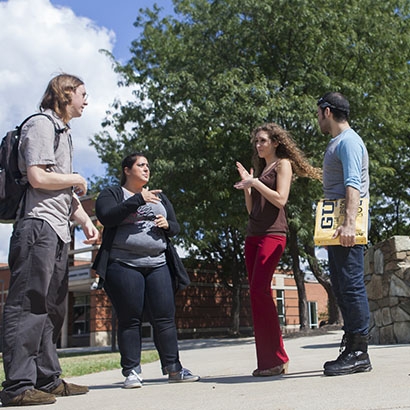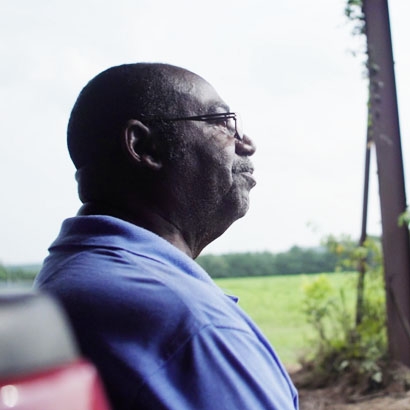The Billion Oyster Project, with help from Morgan Stanley technologists, is setting up a data-tracking system for oysters, a species critical to thriving shoreline environments.
For most people, oysters are easy to overlook. They pass their days soaking in seawater, with the occasional appearance on happy hour menus. But environmental scientists look beyond the appetizer and see oysters for their real value as a keystone species, a designation reserved for select organisms that produce outsized benefits for their environments just by being alive.
In the case of oysters, every living creature benefits from the clean water they create. Adult oysters can filter up to 50 gallons a day, removing pollutants and bacteria from the surrounding waters. But that’s not all. As oysters reproduce, larvae attache to older "parent" shells and then begin growing new shells for themselves that, over time, branch out into large reef structures. This creates a habitat for a host of sea life, and, in turn, helps protect shoreline areas from storm surge.
In support of these benefits to New York Harbor, Morgan Stanley has launched a collaboration with Billion Oyster Project (BOP), a nonprofit committed to reintroducing a billion oysters to the estuary by 2035. Morgan Stanley technologists have built a new data-tracking system for Billion Oyster Project to help process entries from its community scientists documenting the growth of more than 47 million oysters at dozens of community reefs and research stations across the city. Called the BOP Digital Platform, the system offers a powerful, secure and easy-to-use platform based on Microsoft’s cloud computing platform Azure. This engagement is part of Morgan Stanley’s Change Makers program, a pro-bono initiative providing technical expertise and executional support to nonprofit partners; since 2018, the initiative has delivered 11,500 hours of service to 30 organizations.
“We’re very excited by the potential of this,” says Ann Fraioli, Director of Education for Billion Oyster Project. “We’ll be able to collect a huge body of data on oyster growth and mortality through the dozens of oyster research stations we currently have in the water.” The new platform will also enable BOP staffers to collaborate in real time and more easily pull reports to share with scientific, educational and civic partners.
Identifying a Need
New York Harbor was once considered the oyster capital of the world, with more than 200,000 acres of underwater oyster reefs spread across the formerly thriving estuary. But over the past 300 years, water pollution and over-harvesting wiped out around 95% of the wild oyster population, leaving a uniformly lifeless underwater environment.
“Today’s harbor is just metal bulkheaded walls and a flat muddy bottom,” Fraioli says. “There’s not a lot of topography under the water to support a lot of biodiversity.”
In an effort to change that, the BOP collects and cures oyster shells donated from New York restaurants, then attaches oyster larvae to the shells at a hatchery facility in Brooklyn. Once viable in their new shells, the oyster larvae are bundled into mesh bags or metal cages and distributed to more than a dozen reef sites and field stations monitored by partner schools around the city.
A mix of volunteers, mostly students and other researchers, place the oysters into the harbor and regularly monitor their growth and mortality rates, using calipers to measure their shells, as well as logging other animals or algae drawn to the new reef formations.
Stephen Kuster, Executive Director in Technology at Morgan Stanley, became a BOP volunteer in 2017, when his older son signed on to become a BOP community scientist. He enjoyed the work and learned about oysters, but he wondered whether the organization’s data-tracking tools were holding it back.
Finding a Solution
“It was a shame they had to spend so much of their time working on spreadsheets,” he says. “They’ve got to be able to collect this information in an automated way. So I thought, maybe there’s a way Morgan Stanley can help them.”
When Kuster suggested that Morgan Stanley could help revamp its data-tracking system to be more reliable and user-friendly, BOP enthusiastically agreed. Says Fraioli, “It was a complicated system that just wasn't working.” The team soft-launched the BOP Digital Platform to a limited number of community scientists on Earth Day in April, 2021, with a final version set to go live to all volunteers later this year.
Kuster hopes that the technology and key learnings from the project will serve as a template that can also be used for other conservation groups and nonprofits. “We’ve worked alongside BOP to build up their infrastructure,” Kuster says. “If we see that other nonprofits would benefit from these best practices and tools, we will be ready to help them. That’s part of our mission.”
Building Community
In addition to leveraging the platform to improve the quality of their data collection, BOP hopes that it will help create new connections among volunteers, who can finally make better use of the data, thus reinforcing a sense of community. Kuster and his team are hoping to meet that goal by designing an interactive map that will make it easy to identify other nearby research stations or track data from several stations in a specific region.
“We really want the platform to be a way that people can network with each other,” says Fraioli. “The map can show my oyster research station is here at East 90th Street and I can see that there’s another school nearby that’s also doing research. Let me reach out and maybe we can collaborate. Or I might want to compare the data from these two research stations, so let me use the map to find those two stations and download their most recent data. There’s lots of utility in that feature.”
Working on the project also fostered a new communal spirit within Morgan Stanley. According to Kuster, new volunteers from Morgan Stanley’s offices all around the world began reaching out, hoping to contribute to the project, including employees in New York, London, Glasgow and Mumbai. “We started out thinking we would just be a small, regionally located team,” Kuster says. “But now it’s an international volunteering project. It’s an amazing thing. You realize just how small the world can be.”



